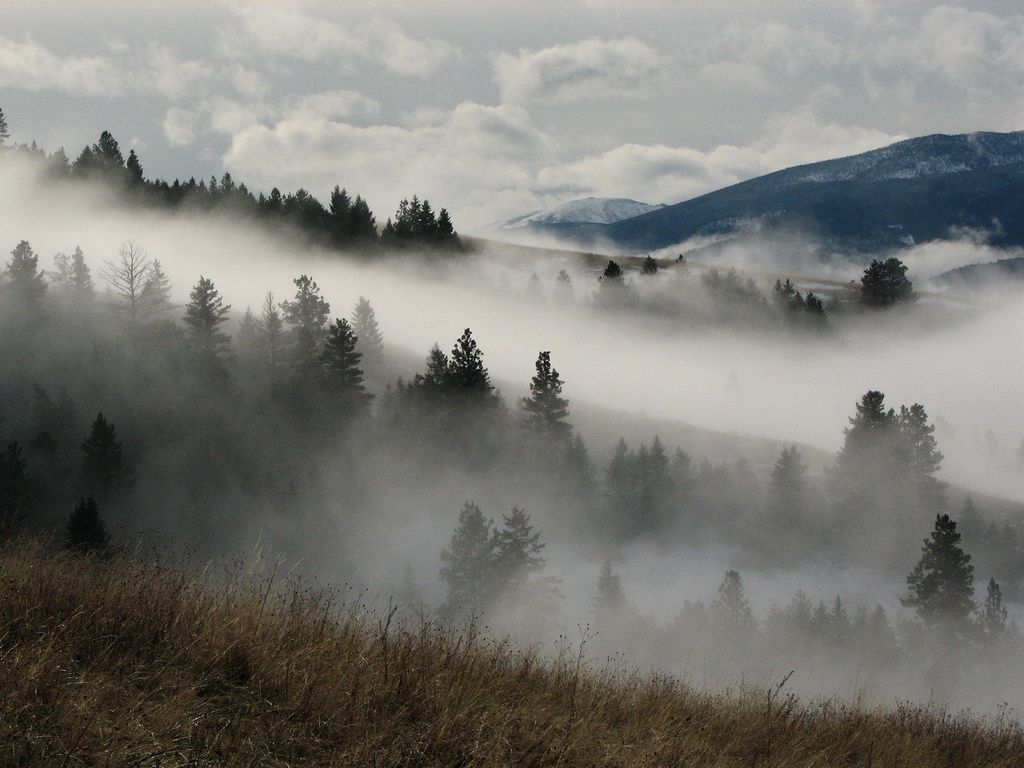Coastal fog stands as one of nature’s most captivating meteorological phenomena, silently rolling in from the ocean to transform landscapes and influence weather patterns in profound ways.
🌊 The Dance Between Ocean and Atmosphere
The relationship between marine environments and atmospheric conditions creates a delicate balance that produces the ethereal blankets of fog we observe along coastlines worldwide. This intricate interaction involves temperature differentials, moisture content, and wind patterns that combine to create one of weather’s most mysterious yet scientifically fascinating occurrences.
When warm, moist air from inland areas encounters the cooler ocean waters, condensation occurs rapidly. This process forms tiny water droplets that suspend in the air near the surface, creating the characteristic low-lying clouds we recognize as fog. The marine layer, as meteorologists call it, acts as a natural cooling system for coastal regions, often maintaining temperatures significantly lower than areas just a few miles inland.
The Science Behind Marine Layer Formation
Understanding coastal fog requires exploring the fundamental physics of atmospheric moisture and temperature interactions. The ocean’s thermal mass remains relatively constant compared to land surfaces, which heat and cool rapidly. This stability creates persistent temperature gradients that drive fog formation throughout different seasons.
Cold ocean currents play a particularly crucial role in this process. Along the California coast, for instance, the California Current brings frigid waters from the north, cooling the air directly above the ocean surface. As warmer air from the land moves over these cold waters, it rapidly cools below its dew point, causing water vapor to condense into fog droplets.
Temperature Inversion: The Fog Trapping Mechanism
A temperature inversion occurs when a layer of warm air sits above cooler air near the surface, essentially creating a lid that traps the fog below. This atmospheric condition is particularly common in coastal regions and explains why fog can persist for hours or even days in certain locations.
The inversion layer prevents the vertical mixing of air that would normally dissipate fog. Instead, the fog remains trapped near the surface, sometimes extending several miles inland before the warming effect of land surfaces causes it to evaporate. This phenomenon is especially pronounced during summer months in many coastal areas, creating what locals often call “June Gloom” or “May Gray” in Southern California.
🌡️ Types of Coastal Fog and Their Characteristics
Not all coastal fog forms through identical processes. Meteorologists classify several distinct types based on their formation mechanisms and characteristics.
Advection Fog: The Most Common Coastal Visitor
Advection fog develops when humid air moves horizontally over a cooler surface, typically the ocean. This type represents the most frequent fog occurrence along coastlines and can be remarkably persistent. The iconic fog that shrouds San Francisco’s Golden Gate Bridge exemplifies advection fog, created as Pacific air masses move over the cold California Current.
This fog type requires specific wind conditions to form and maintain itself. Gentle winds between 5 to 15 miles per hour provide ideal conditions, moving moist air over cold water while preventing the turbulent mixing that would dissipate the fog. Stronger winds tend to break up fog formations, while completely calm conditions prevent the necessary horizontal air movement.
Sea Smoke: Winter’s Dramatic Display
Sea smoke, also called steam fog or Arctic sea smoke, occurs when extremely cold air moves over relatively warmer water. This creates a dramatic visual effect where the ocean appears to steam or smoke, as water vapor rapidly condenses upon contact with the frigid air.
This phenomenon is most common in polar and subpolar regions during winter months but can occur anywhere cold continental air masses move over unfrozen water bodies. The temperature difference between air and water must typically exceed 10 degrees Celsius for sea smoke to form, creating swirling columns of fog that rise from the water’s surface.
Geographic Hotspots for Coastal Fog Formation
Certain locations around the globe have become renowned for their persistent fog conditions, shaped by unique combinations of ocean currents, topography, and atmospheric patterns.
The Foggy Coast of California
California’s coastline experiences some of the most predictable and extensive fog formations in the world. The cold California Current, combined with the warm Central Valley air during summer, creates perfect conditions for marine layer development. Cities like San Francisco, Monterey, and Santa Barbara regularly experience fog that can last from early morning through afternoon hours.
The coastal mountain ranges in California also play a significant role, channeling fog through valleys and creating microclimates. The famous fog that flows through the Golden Gate strait results from the pressure difference between the warm Central Valley and the cooler Pacific coast, with fog acting as nature’s air conditioner for the San Francisco Bay Area.
Newfoundland: The Foggiest Place on Earth
Grand Banks off Newfoundland, Canada, holds the distinction of being one of Earth’s foggiest locations, experiencing fog on average 206 days per year. The meeting of the cold Labrador Current and the warm Gulf Stream creates persistent fog conditions that have challenged maritime navigation for centuries.
This region’s fog density has shaped its history, from fishing industry practices to tragic maritime disasters like the Titanic sinking. Modern weather forecasting and navigation technology have reduced fog-related hazards, but the phenomenon remains a defining characteristic of this coastal region.
⚓ Maritime and Coastal Community Impacts
Coastal fog profoundly influences the communities and ecosystems that exist along ocean margins, creating both challenges and unique ecological niches.
Navigation and Safety Concerns
Throughout maritime history, fog has represented one of the most dangerous weather conditions for sailors and coastal travelers. Reduced visibility can shrink to less than a quarter mile, making navigation treacherous even with modern technology. Foghorns, lighthouse systems, and radar technology all developed partially in response to fog-related hazards.
Aviation faces similar challenges, with coastal airports often experiencing delays and cancellations during heavy fog events. Modern instrument landing systems have dramatically improved safety, but fog remains a significant factor in flight operations at coastal facilities worldwide.
Ecological Benefits and Adaptations
Despite its challenges for human activities, coastal fog provides critical ecological services. In California’s coastal redwood forests, fog contributes up to 40% of the moisture these giant trees receive during dry summer months. The trees’ needles capture fog droplets through a process called fog drip, providing essential water during periods when rainfall is absent.
Many plant and animal species have evolved specific adaptations to thrive in fog-dominated environments. The Namib Desert’s fog beetles, for instance, have developed specialized wing surfaces that harvest water from fog, a remarkable adaptation to an otherwise arid environment where coastal fog provides the primary moisture source.
🔬 Modern Forecasting and Fog Prediction Technology
Predicting coastal fog formation has evolved from an art to a sophisticated science, incorporating satellite imagery, computer modeling, and real-time oceanographic data.
Satellite and Remote Sensing Technologies
Modern weather satellites can detect fog and low cloud formations using infrared and visible light sensors. These systems distinguish fog from higher clouds by analyzing temperature differences and reflectivity patterns. The GOES (Geostationary Operational Environmental Satellite) series provides continuous monitoring of coastal regions, enabling meteorologists to track fog development and movement.
Ground-based sensors, including visibility meters and ceilometers, provide localized data about fog density and vertical extent. This information feeds into numerical weather prediction models that simulate atmospheric conditions and forecast fog formation with increasing accuracy.
Numerical Weather Prediction Models
Computer models now incorporate oceanic and atmospheric variables to predict fog formation hours or even days in advance. These models analyze sea surface temperatures, air temperature profiles, humidity levels, and wind patterns to identify conditions favorable for fog development.
High-resolution regional models have become particularly valuable for coastal forecasting, with grid spacings fine enough to capture the local topographic and oceanic features that influence fog formation. These advances have significantly improved forecast accuracy, though fog prediction remains challenging due to the sensitive nature of the physical processes involved.
Climate Change and Evolving Fog Patterns
Recent research suggests that climate change is altering traditional coastal fog patterns in various regions, with potentially significant ecological and economic implications.
Declining Fog Frequency in Some Regions
Studies of California’s coastal fog show a declining trend over recent decades, with some areas experiencing approximately 30% less fog than historical averages. This reduction appears linked to changes in ocean temperatures and atmospheric circulation patterns associated with global climate change.
The ecological consequences of reduced fog could prove substantial, particularly for fog-dependent ecosystems like coastal redwood forests. Scientists are monitoring these changes closely, as shifts in fog patterns may force adaptations in both natural ecosystems and human activities dependent on stable coastal climates.
Shifting Patterns and New Normal Conditions
While some regions see declining fog, others may experience increased frequency or altered seasonal timing. Understanding these changes requires long-term monitoring and sophisticated climate modeling to separate natural variability from anthropogenic climate change signals.
Coastal communities may need to adapt to these shifting patterns, adjusting agricultural practices, water resource management, and urban planning to accommodate new fog regimes. The interdisciplinary nature of this challenge requires collaboration between meteorologists, ecologists, and social scientists.
🌿 Living With and Adapting to Coastal Fog
Coastal communities have developed diverse strategies for coexisting with persistent fog conditions, turning potential challenges into advantages where possible.
Architecture and Urban Design Considerations
Buildings in fog-prone areas often incorporate specific design elements to manage moisture and maximize natural light during foggy periods. Large windows oriented to capture available light, moisture-resistant materials, and strategic placement of structures relative to prevailing fog patterns all contribute to comfortable living environments.
Urban planning in cities like San Francisco acknowledges fog’s influence on microclimates, with neighborhoods experiencing dramatically different conditions based on elevation and proximity to fog channels. This awareness influences everything from landscape design to energy efficiency standards.
Economic Opportunities in Foggy Climates
Some regions have successfully marketed their foggy conditions as tourist attractions. San Francisco’s fog, personified as “Karl the Fog” on social media, has become a beloved part of the city’s identity rather than merely a weather nuisance. This reframing demonstrates how communities can embrace distinctive climate characteristics.
Agricultural sectors have also adapted, with certain crops thriving in fog-cooled coastal climates. California’s coastal wine regions, for instance, benefit from fog moderation that extends the growing season and develops complex flavor profiles in grapes, contributing to world-class wine production.
The Future of Coastal Fog Research
Ongoing research continues to unveil new insights about coastal fog formation, behavior, and impacts, with implications extending far beyond meteorology.
Scientists are developing more sophisticated instruments to measure fog properties at micro scales, improving our understanding of droplet formation and growth processes. This research has applications in climate science, atmospheric chemistry, and even water harvesting technologies for arid regions.
Interdisciplinary approaches combining meteorology, oceanography, ecology, and social sciences provide holistic perspectives on fog’s role in coastal systems. These comprehensive studies help communities prepare for climate-driven changes in fog patterns while optimizing the benefits fog provides to both natural and human systems.
🌏 Embracing the Mystery and Beauty
Coastal fog remains one of nature’s most evocative phenomena, transforming familiar landscapes into mysterious, ethereal realms. Beyond its scientific interest, fog holds cultural significance in coastal communities worldwide, inspiring art, literature, and a sense of place that defines regional identity.
Understanding the marine influences that shape fog formation deepens our appreciation for the complex interactions between ocean and atmosphere. As we continue studying these processes, we gain not only practical forecasting improvements but also profound insights into Earth’s interconnected climate systems.
The mysteries of coastal fog reveal themselves gradually through patient observation and rigorous scientific inquiry. Each fog event represents a unique combination of atmospheric conditions, ocean states, and geographic factors, making every occurrence slightly different from all others. This variability ensures that coastal fog will continue challenging and fascinating both scientists and casual observers for generations to come.
Whether viewed as a navigational hazard, an ecological resource, or simply a beautiful natural phenomenon, coastal fog exemplifies the dynamic relationship between marine environments and weather patterns. By studying and understanding these processes, we better prepare ourselves to live sustainably with the ocean’s influence on our climate and weather, adapting to changes while preserving the ecological and cultural values that fog-shaped coastlines provide.
Toni Santos is a visual storyteller and artisan whose creations celebrate the poetry of the natural world. Through his thoughtful artistic lens, Toni captures the elegance of botanical forms, transforming them into meaningful expressions of symbolism, resilience, and timeless beauty.
His journey is deeply rooted in a passion for flora and the mysteries they carry. From the shape of a petal to the curve of a vine, each design Toni brings to life reflects a deeper narrative — one of growth, transformation, and harmony with nature. Whether crafting symbolic floral jewelry, enchanted botanical illustrations, or seasonal visual studies, Toni’s work evokes the quiet magic found in Earth’s most delicate details.
With a background in handcrafted artistry and visual design, Toni blends technique with intention. His creations do more than decorate — they speak, often inspired by ancient meanings behind flowers, the cycles of the seasons, and the invisible bonds between nature and spirit.
As the creative voice behind Vizovex, Toni shares this botanical journey with the world, offering curated stories, handcrafted collections, and thoughtful articles that help others reconnect with nature’s symbolism and artistic essence.
His work is a tribute to:
The quiet power of flowers and their messages
The art of visual symbolism in everyday life
The beauty of slowing down to see what’s hidden in plain sight
Whether you’re an artist, a nature lover, or someone drawn to the deeper meanings behind the natural world, Toni welcomes you to explore a space where aesthetics meet soul — one petal, one story, one creation at a time.





